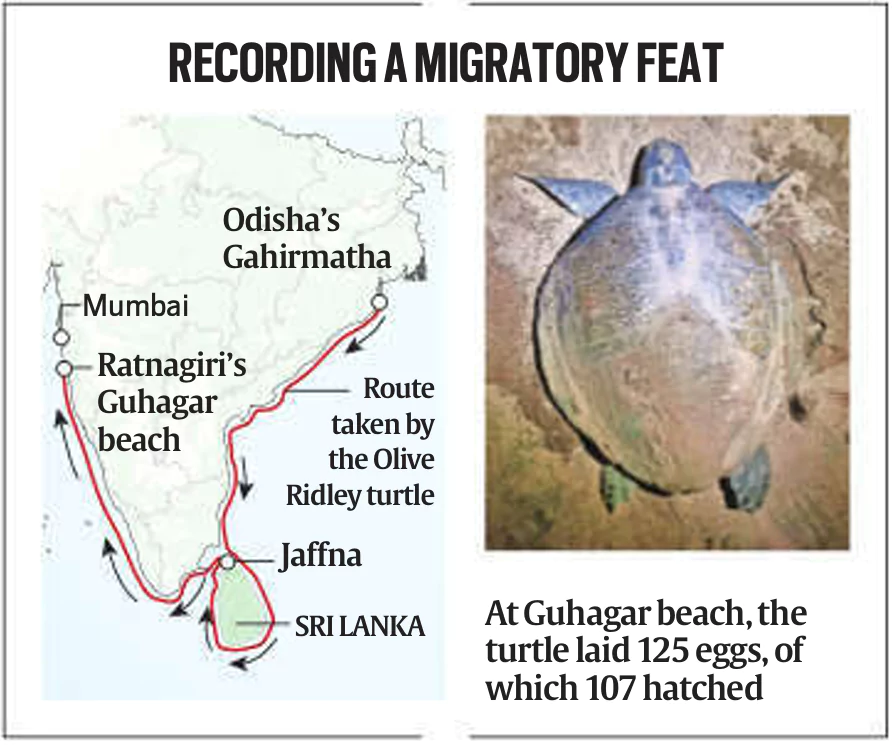Olive Ridley Turtles: Marine Marvels of Arribada
The Olive Ridley Turtle (Lepidochelys olivacea) is a fascinating marine species, found primarily in the warm waters of the Pacific, Atlantic, and Indian Oceans.
- Classified as 'Vulnerable' under the IUCN Red List, this turtle is best known for its spectacular mass nesting event called arribada, where thousands of female turtles come ashore simultaneously to lay eggs—a breathtaking natural phenomenon.
- In India, the nesting season typically spans from December to March, with major arribada sites located along the Odisha coast.
- These turtles are not just a marvel of marine ecology but also a symbol of the delicate balance between nature and conservation.
Major Nesting Sites in India
- Gahirmatha Marine Sanctuary (Odisha)
- Rushikulya river mouth (Odisha)
- Devi River mouth (Odisha)
- Newly recorded Ratnagiri Coast (Maharashtra) — significant for shifting nesting patterns.
Migration Route and Dual Nesting Strategy
- Turtle 03233 covered ~4,500 km from Gahirmatha (Odisha) → Sri Lanka/Jaffna → Thiruvananthapuram (Kerala) → Ratnagiri (Maharashtra).
- This shows inter-coastal migration and possibly a dual nesting strategy (mass nesting once, solitary nesting elsewhere later).
- Sri Lanka is noted as a foraging ground for Olive Ridleys.
- Alternative shorter route via Pamban corridor is hypothesized.

Flipper Tagging vs Satellite Tagging
- Flipper Tagging:
- Metal tags (titanium/inconel), manually attached.
- Inexpensive, used for mass tagging (e.g., 12,000 tagged in Odisha 2021).
- Provides data only upon resighting.
- Satellite Tagging:
- Attached to shell, emits radio signals.
- Gives real-time data on movement, foraging, depth, etc.
- Costly, used for detailed studies.
Wildlife Conservation Initiatives
- Zoological Survey of India (ZSI) and Wildlife Institute of India (WII)
- Maharashtra Forest Department started flipper tagging in January 2025 — new initiative on the Konkan Coast.
- Local volunteers called "Kasav Mitras" (turtle friends) help patrol beaches, showing community participation in conservation.
Legal & Institutional Framework
- Gahirmatha Marine Wildlife Sanctuary is a protected nesting site.
- Olive Ridley turtles are protected under Schedule I of the Wildlife Protection Act, 1972, ensuring maximum protection.
- The discovery calls for expanding conservation focus to west coast as well — demands policy update.
Implications for Climate and Marine Studies
- Long-range migration across Bay of Bengal → Indian Ocean → Arabian Sea suggests strong navigational ability possibly influenced by ocean currents or temperature patterns.
- Rising sea temperatures or habitat degradation on east coast could push turtles to
explore new nesting grounds.













